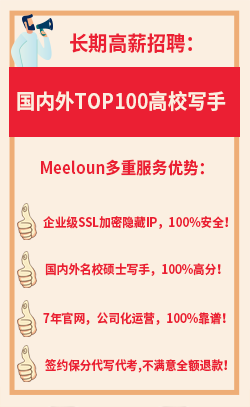留学生作业-金融分析报告撰写方法
发表时间:2014-11-18 09:34:01 作者:admin 阅读:68次

以下是留学生作业代写金融分析报告的撰写方法。准确和诚实的沟通贵公司的优势和劣势将有助于说服投资者把他们的钱投在你的业务。财务分析报告是一个文档,或引起投资者的极大兴趣,因为它包含一个详细的评估公司的财务状况。编写财务分析报告比较成本和效益,将这些概念转化为实际金额。而不是粉饰经济挑战,公开承认威胁公司的福祉而不用担心追逐利益相关者。专业市场观察人士可能会明白投资成本和收入往往依赖全球市场等变量。一个透明的和客观的评估贵公司的财务状况将作为一个可靠的来源,吸引投资者深入。
Accurately and honestly communicating your company's strengths and weaknesses will help convince investors to throw their money behind your business. A financial analysis report is a document that will be of great interest to investors since it contains a detailed assessment of your company's financial health. Write a financial analysis report comparing costs and benefits, translating these concepts into real dollar amounts. Rather than glossing over economic challenges, openly admit threats to the company's well-being without fear of chasing stakeholders away. Professional market-watchers who are likely to invest understand that costs and income often depend on variables such as global markets. A transparent and objective assessment of your company's finances will serve as a reliable source, enticing investors to take a deeper look.
Instructions
-
1
Begin the report with an "Executive Summary" of key findings from the financial analysis. State the time period the study focused on. Identify the firm requesting the report.
-
2
Prepare an introduction that emphasizes the report's objectives. Define financial terms necessary to understanding those objectives. For example, a reporting objective might be to measure a firm's cost-benefit ratio. That would require the report also define terms like "project costs" that help to clarify the main points.
-
3
Move on to a section titled "Resources." Write a general description of the data analyzed and where it came from. Examples of resources include income statements, balance sheets, inventory ratios, operating costs and warehouse statistics.
-
4
Describe resources further under the heading "Method of Collecting Data." State whether data was provided by different sources, such as government agencies or departments within the company. Explain each source's method for reporting data. Discuss how the analysis accounted for these distinct reporting methods.
-
5
Call the next section "Significant Financial Events." Enumerate events that occurred during the time period studied and that altered results. For example, unrealized gains on stock sales during the past year might explain the company's unexpected rise in revenue. Then, identify offsets to that rise in income.
-
6
Continue with a section titled "Detailed Results." Provide a comprehensive analysis of investment returns, income statements, balance sheets and productivity ratios. Comment on each of these factors and provide support for your statements with tables and graphs.
-
7
Compare results from different quarters in a section called "Analysis of Variance." For example, contrast fourth quarter sales to average sales.
-
8
Create an appendix for "Financial Revenues." Define how that term was used to prepare the report. Tabulate the revenues over the time period of the analysis. For example, the report might chronicle plywood sales for all contracts in a given year. Distinguish between the amount of plywood actually sold in the year and the amount provided for in contracts signed that year.
-
9
Finish the report with an appendix for "Observations." Discuss any problems encountered in analyzing the data, then explain how the research method handled the problems. Conclude with a statement that projects future performance based on past results.



